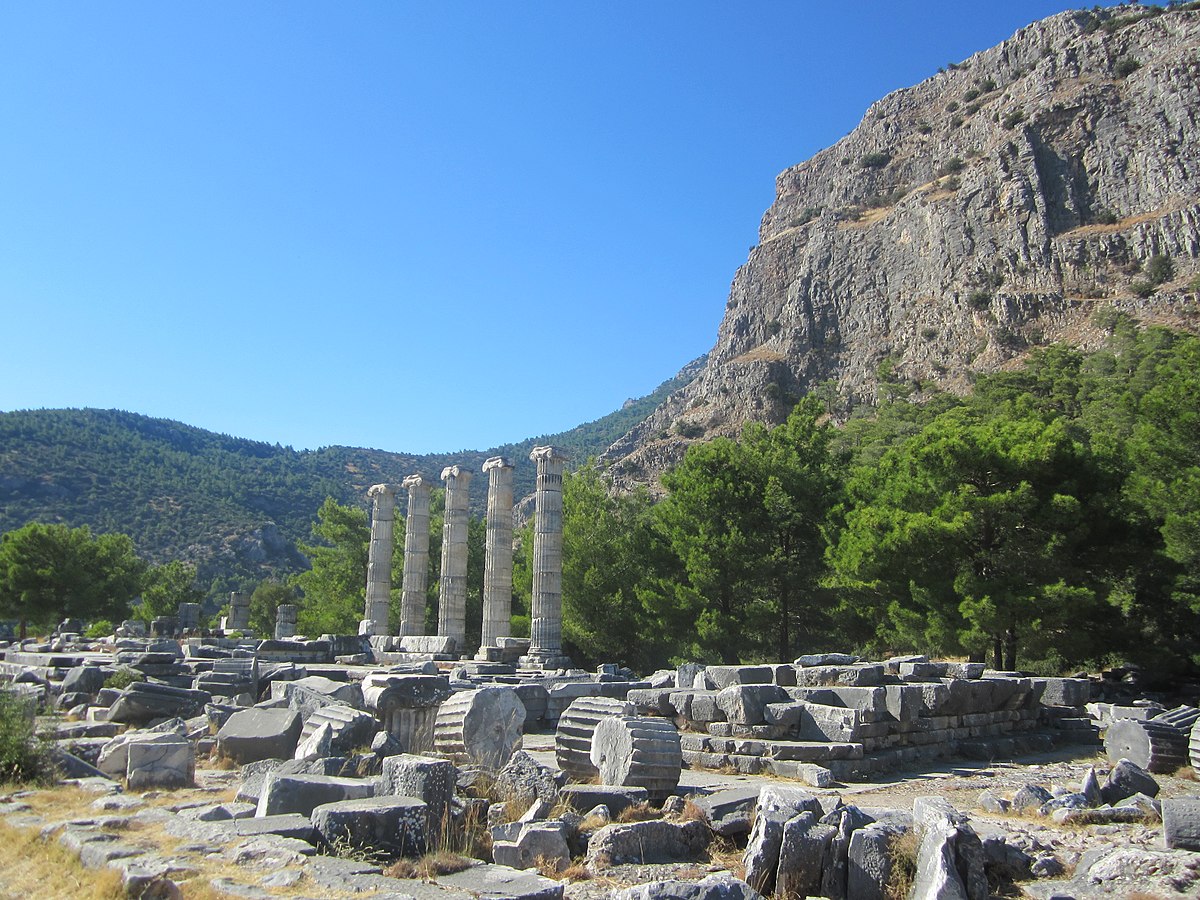Kusadasi’s historical richness is not limited to Ephesus, Temple of Artemis, Kusadasi Castle, and House of Virgin Mary.
Kusadasi has many historical sites, and some of these sites are history hidden in plain sight.
For example, you may enjoy the sandy beaches of Pigela, yet you may not notice old shrines and ancient city ruins hidden in the sandy beach.
Many of Kusadasi’s most ancient sites are waiting to be uncovered. In Kusadasi, the latest ancient city discovered in the 1990s by a shepherd in Guzelcamli National Park.
This guide is not a Wikipedia article about the history of Kusadası. As a local, my personal aim in this guide is to raise awareness about Kusadasi and its history.
I believe I can help you spot thousand years of its history while you enjoy Kusadasi.
In this article, I will tell the history of well-known historical sites as well as buried and forgotten historical sites that even locals don’t know.
You can also check my complete guide on Kusadasi, on this page you will also discover all articles about Kusadasi.
Map of All Historical Sites in Kusadası
In the map below, you can see all the spots that I wrote in this blog.
Historical Landmarks in Kusadasi
Kusadasi is famous for Ephesus, Temple of Artemis, House of Virgin Mary, and Kusadasi Castle.
These 4 historical sites are visited by millions every year. Briefly;
- The Temple of Artemis is one of the Seven Wonders of the World.
- Ephesus is an ancient city listed as a Unesco World Heritage Site.
- The House of Virgin Mary is the last resting place of Jesus’s mother.
- Kusadasi Castle is a Unesco World Heritage Site candidate.
Other lesser-known historical sites are
- Andiz Tepe – Oldest settlement in Kusadasi dating back to 3000 BC
- Melia and Panionion – Capital city of Ionian Union
- Zeus Cave – Zeus’s Love Nest
- Pygale – Oldest health city in the world
- Neopolis – Holiday Resort of Ephesians
- Scala Nova – The first settlement in Kusadasi town center and also the historical name of Kusadasi
- Marethesium – A city waiting to be discovered
- Anaia/Anea (Kadı Kalesi) – Another lost city waiting to be uncovered
- Medieval era Landmarks in Kusadasi
- Priene – Ionian city with founded on hills with breathtaking sea view.
- Miletus – Father of many cities
All locations are pinned on the map.
You can also check my guides on things to do in Kusadasi and things to do on Kusadasi’s nights to add more places to your bucket list.
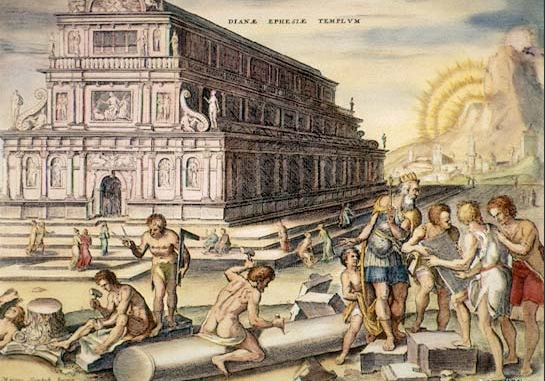
1. Temple of Artemis
The Temple of Artemis is one of the 7 Wonders of the World. The Temple of Artemis was built in the ancient city of Ephesus with the help of Lydians.
Lydians were the people who invented the money and currency systems. Lydian Kings were the wealthiest people of all time.
Yet, even for the Lydians Kings, it took 120 years to complete this marvel.
Ephesus was fond of Goddess Artemis and you can still see traces of Ephesian Artemis in today’s pop culture. DC’s Wonder Woman is a fictional character inspired by Ephesian Artemis.
You should read my guide on the Temple of Artemis and its legacy if you want to learn more.
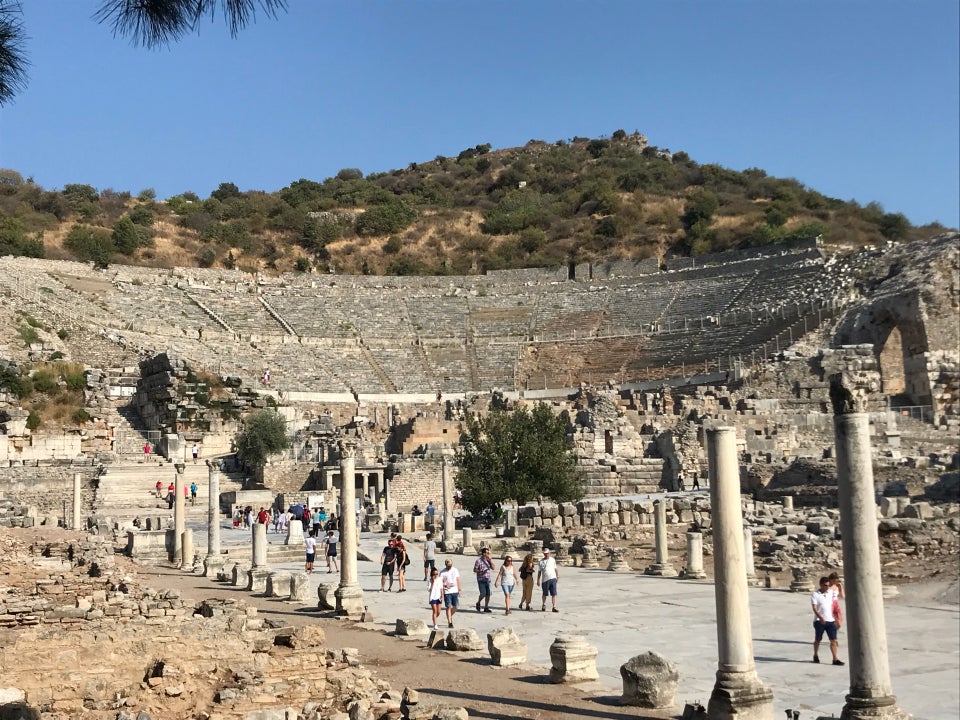
2. Ephesus
Ephesus is around 10 miles (16 km) from the Kusadasi town center and port.
Ephesus is an ancient city that has a history of 6.000 thousand years. According to legends, the city was founded by Amazons.
Today, Ephesus is listed as one of the Unesco Cultural Heritage Sites, and it is one of the biggest archeological excavations in the world. You can easily spend a day touring around Ephesus, Temple of Artemis and Selcuk area.
Once upon a time, Ephesus was a thriving metropolitan city. In the 1st century BC, Ephesus’s population reached more than 250,000. At that time, Ephesus was the second more populous city in the world after Rome.
It is hard to believe that Ephesus was once a coastal city. The coast of Ephesus was filled by the sands brought by the Little Meander the River. Today, the nearest beach is around 5 km (3 miles) to Ephesus.
Unfortunately, the Ephesus was mostly abandoned after the city lost its connection to the sea.
If you wish to learn more about Ephesus, here is my complete guide on Ephesus with maps.
In the middle of the day, when it is hot, you may also want to discover Sirince village. This lovely village is an excellent place to taste local wines or escape the summer heat in lovely nature. Sirince is ten minutes driving distance to Ephesus.
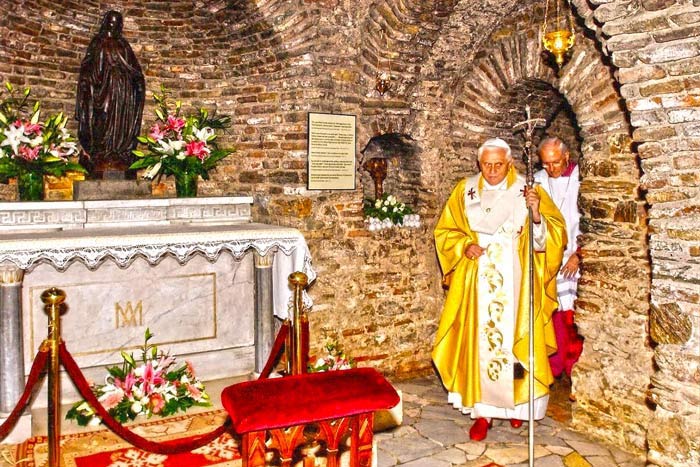
3. House of Virgin Mary
St. John brought Virgin Mary to Ephesus after the death of Jesus. The House of Virgin Mary is the actual house where the Virgin Mary spent the rest of her life.
This house also is the ending stop for many ancient pilgrimage routes.
Many Popes visited this shrine, including Paul VI, John Paul II, and Benedict XVI. The spring, which passes under the house, is believed to have healing properties.
I have visited the House of Virgin Mary several times myself. Try not to go there on weekends or midday when all tourist tours arrive. The place can be really crowded during these times.
The house is a few kilometers away from the Ephesus. The road to the church is in good condition. Yet it goes uphill and can be narrow on some points. Visiting here, definitely worth the effort.
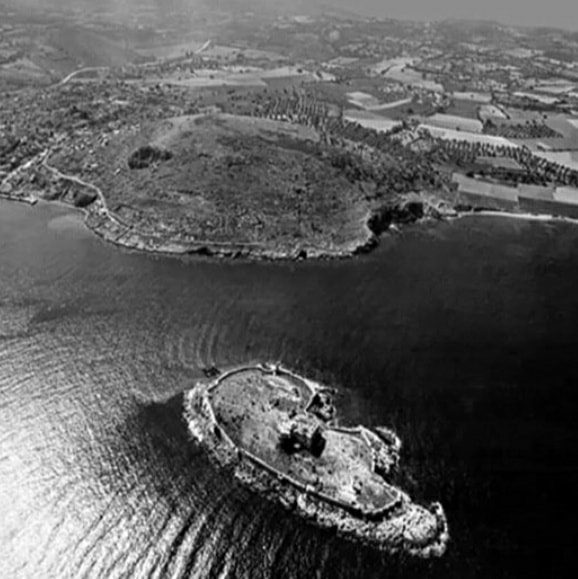
4. Kusadasi Castle
The island that Kusadasi Castle was built on is named Pigeon Island. This island also gave its name to Kusadasi. Kusadasi means “bird island” in Turkish.
In the 13th and 14th centuries, the Genoese built the castle. At this time, Kusadasi’s name was Scala Nova.
Scala Nova was a trading port on Genoese Trade Routes stretching from Italy to Crimea.
Genoese had an extensive trading network on the Mediterranean and the Black Sea in the Byzantine era.
The castle has been added to the World Heritage Tentative List by UNESCO as a part of Trading Posts and Fortifications on Genoese Trade Routes from the Mediterranean to the Black Sea.
Kusadasi is a city-sized holiday destination, be sure to check my article Where to Stay in Kusadasi to choose your hotel and the area that best suits you.

Castle was also renovated under Turkish Ottoman rule, yet Genoese features can still be seen today.
The main function of the castle was to protect the harbor and garrison the offshore trade routes to prevent piracy in the area.
Barbaros Hayrettin Pasha, grand admiral of the Ottoman Navy, built the inner castle. Later, Ilyas Aga built the walls in 1826.
Recently, Kusadasi Castle was connected by a narrow walk path to the city. One side of the walkway is the departing point for daily tourist boat trips.
Today, the inner castle is operated as a museum. Kusadasi Castle Museum is small but a good place to visit. Museum has exhibitions about plants, sea life, and birds. The most impressive one is the skeleton of a whole whale.
Castle also hosts concerts and cultural events.
HISTORICAL FACT Barbaros Hayrettin Pasha was a Turkish born in Lesbos. He was a pirate first. He conquered Algeria from the Spanish and became the Grand Admiral of the Ottoman Fleet.
He won many victories against the Catholic alliance. He was known as Barbarossa ( The red beard), and he is the real pirate who inspired the fictional character of The Pirate Captain Barbarossa.
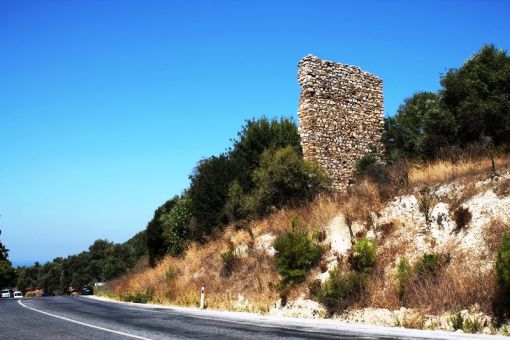
5. Andiz – First Farmers of Kusadasi
The first settlement in Kusadasi was formed around 3000 BC in the region called Andiz Tepe.
This area is far from today’s town center and in Pilav mountain. I pinned the estimated location of this place on the map.
The first settlers were the indigenous people of Anatolia who belonged to Lelegians and Carians culture groups.
This small settlement was a small farming society in the beginning. In those times, Kusadası natives enjoyed olives, grapes, figs, and their fertile lands.
The settlement functioned as an important stop for trade routes coming from inland to Kusadasi shores during the Lydian, Roman and Turkish periods.
Andiz Kulesi (Andiz Tower), which can be seen today, was a watchtower that was built to improve the region’s security.
The settlement is mostly under the soil and waiting to be uncovered. Yet, if you wish to walk in nature and wander around the unearthed ruins, this is a good spot.
TRAVEL TIP There are many excellent Turkish breakfast places on the road to Yeniköy. You can enjoy these before exploring Andiz ruins.
Coming from Kusadasi, if you continue to follow the road after the ruins, the road leads to Camlik town, where you also explore another aspect of Turkish history in the Camlik Locomotive Museum. In this museum, you can witness locomotives dating back to the mid-1800s.
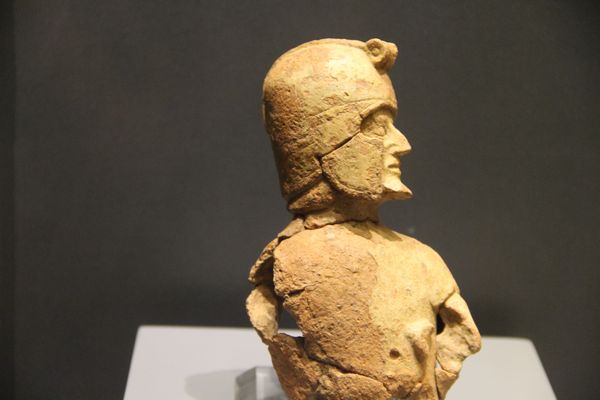
6. Melia and Panionion – Brussels of Ionian Union
The most powerful 12 Ioanian cities formed a union resembling the European Union. This confederation was called the Ionian League or Panionic League.
The center of the Panionic confederation was the ancient city of Panionion.
The other confederated cities were Miletos, Myus, Priene, Ephesus, Kolophon, Lebedos, Teos, Klazomenai, Phokaia, Samos, Khios, and Erythrai.
The Council of the Panionic League convened here regularly to resolve important political and religious matters.
As a general rule, no foreigners were allowed in this city, only citizens of confederated cities were allowed to enter.
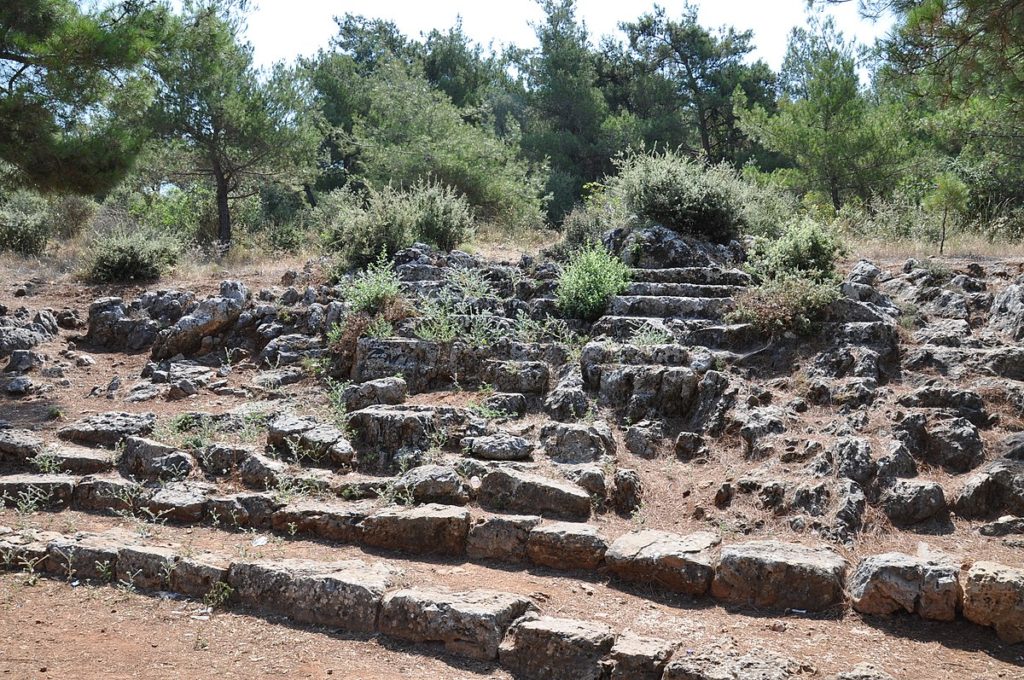
Around 700 BC, the city was the cultural capital with many festivals.
The area Panionion covers a vast area. It is still disputed whether Melia was a region of Panionion or a separate city.
Most of the ruins were accidentally discovered by a shepherd in the 1990s. Excavations are still progressing, and uncovered items are displayed in Aydin City Museum.
Some ancient city areas are in the National Park Zone, and visits require a special permit.
The best way to explore this hidden city is to go on a trekking adventure with a good local guide. Alternatively, there are jeep and horse safari which you can take to explore this mountain with untouched nature.
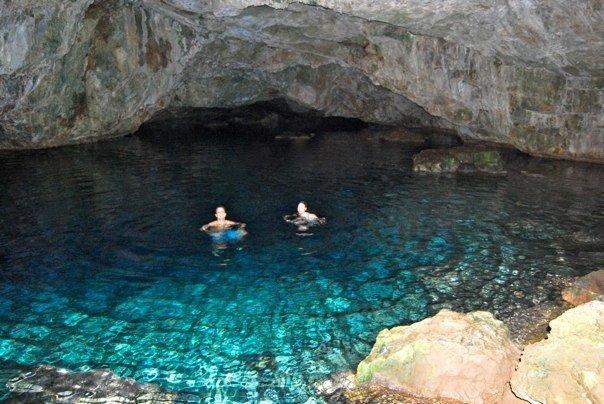
7. Zeus Cave – Zeus’s Love Nest
Zeus Cave was part of Melia and Panionion. Unlike other parts of this ancient city, the cave is easily accessible from the beach.
The cave entrance is very close to the Guzelcamli National Park entrance. Yet, most visitors to National Park miss this spot because the cave entrance is hidden.
According to legend, this is the hiding spot of Zeus. He hid in here for various reasons. One time, he broke the trident of his brother Poseidon and waited for his brother to calm down.
Another tale says he used it as a love house. Because the cave limited Zeus’s wife, Hera’s vision, Zeus enjoyed this cave with local ladies and princesses.
The cave’s waters are cold, and it may be hard to swim if you are used to hot water like me. Yet, you should wash your hair. The cave water is famous for cleansing your hair and making it shiny.
You can read my guide on Zeus Cave to learn all the details you need to know.
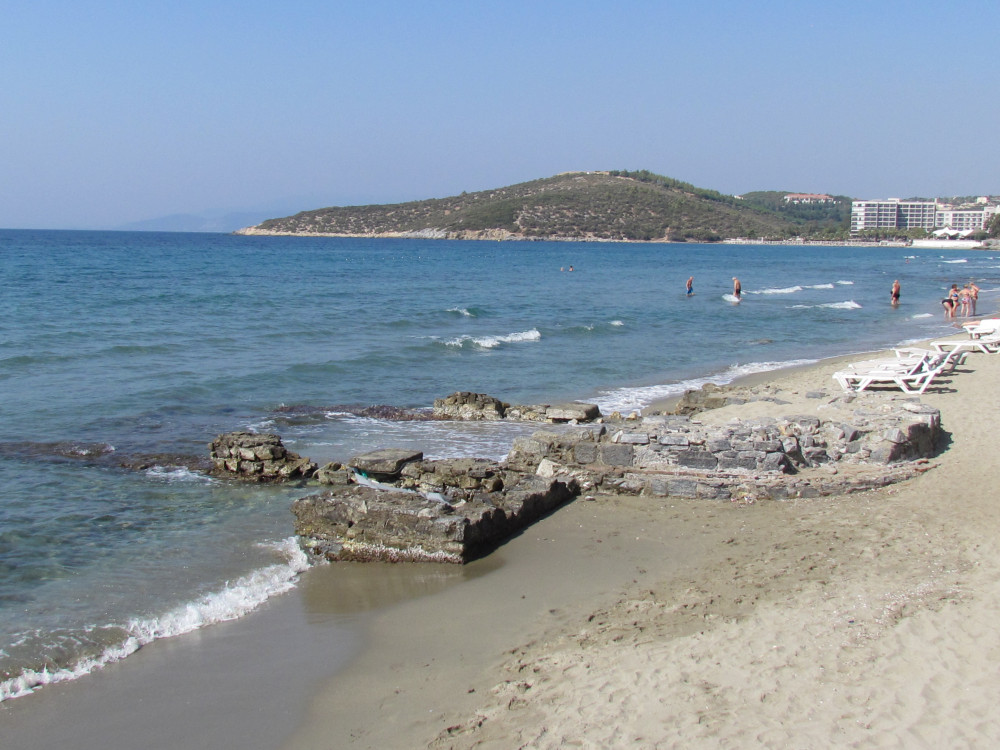
8. Pygela – Oldest health city in the world
I had been to this beach many times, and I should confess that I did not know this place was an ancient city.
Pygela is the oldest health city in the world.
Today the city is literally lost to the sands of time. Most of the ancient town is buried on the beach sands.
The city was founded during the Trojan Wars by Greek King Agamemnon.
The city’s main purpose was to heal wounded Greek soldiers. Greeks believed that the waters of Pygela beach had some kind of healing power.
Even the Great Alexander stopped here with his soldiers for rest and entertainment.
SUGGESTED READING: 24 Kusadasi’s Best Beaches, Beach Clubs, Boat Tours (Map included)
9. Neopolis – Holiday Destination of Ephesians
Neapolis (Turkish: Yılancı Burnu) is the first settlement in the center of today’s Kusadasi. It is located on a smaller island half a mile away from Kusadasi castle.
Neopolis was first built as a holiday destination for Ephesians.
Most people enjoy the Jade Beach Club located here without knowing the island’s history.
Remnants of the settlement were mostly used in the construction of Kusadasi Castle. You can see marble pieces in the Kusadasi castle walls, and these marbles are reused remnants of Neopolis.
This settlement later evolved to Scala Nova and modern Kusadasi.
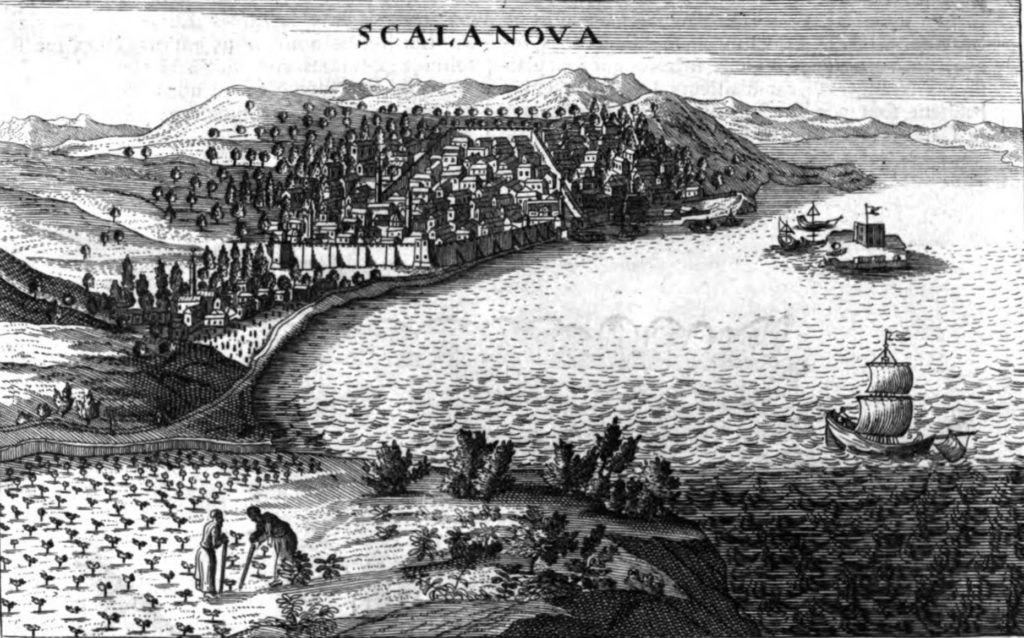
10. Scala Nova – Old Name of Kusadasi
The doom of Ephesus, was also the dawn of the Kusadasi.
As the Ephesian harbor area got shallower with more sands brought my little Meander River. The Ephesians looked for a better harbor area.
The first settlement, Neopolis, was a holiday location for Ephesians, then Ephesians began settling here permanently. Neopolis started to be known as Ephesus Neopolis.
Then Ephesus Neopolis evolved into Scala Nova, and Scala Nova became Kusadasi city center.
Scala Nova was a port city and an important harbor for Venetians and Genoese. For a long time, Kusadasi was controlled by Genoese, yet it was Byzantine land.
Today, Scala Nova is the name of the shopping mall in Kusadasi. Yet, I would not recommend it. Check my guide to learn the best places to shop in Kusadasi.
11. Marethesium – A city waiting to be discovered
Some historians claim there is an additional ancient city in Kusadasi waiting to be discovered. I pinned a possible location of Marathesium on the map.
This is a legit claim because the old texts mention an agreement Ephesians made with Samos. In this agreement, Ephesians exchanged Neopolis for Marethesium.
If Neopolis and Marethesium are not the same places, there should be another nearby settlement still waiting to be uncovered.
12. Anaia/Anea (Kadıkalesi) My childhood playground turns out to be an ancient settlement
Anaia is in Sogucak district of Kusadasi. This place is 2 km away from my summer house. It was a hill with thick bushes and a flat land between the hill and the sea.
This place used to be a hill where we played in my childhood.
I used to go on trekking adventures on the hill. We could see some of the castle ruins buried, but nothing was more interesting than our imagination.
In 2001 an archeological excavation started in this area, and the area is fenced. We now know it was a port with a castle and a monastery. Also, there were soldiers sentries left from World War I.
Artifacts found here are displayed at Aydin Museum.
Yet, the excavations continue revealing more secrets of this place. Some researchers believe that there is also an ancient city comparable to Troya under the Byzantine ruins.
Excavations are continuing, and in 2021, the historical site was still closed to visitors.
For more travel tips, check my guide “All You Need to Know Before Coming to Kusadasi” and “Is Kusadasi Safe?.
13. Kusadasi Landmarks from Ottoman Era
The first time Turks ruled this was in the pre-Ottoman era of 1086. Yet, Byzantine regained control of the region shortly after.
Kusadasi continued to be a trade hub in Ottoman times.
The two most important structures built in Ottoman Times are the Okuz Mehmet Pasha Mosque (1618) and Okuz Mehmet Pasha Caravanserai (1618). Today, both these buildings are functional and still being used.
The Barbaros Hayreddin Pasha renovated the Castle, and the Okuz Mehmet Pasha reinforced city walls.
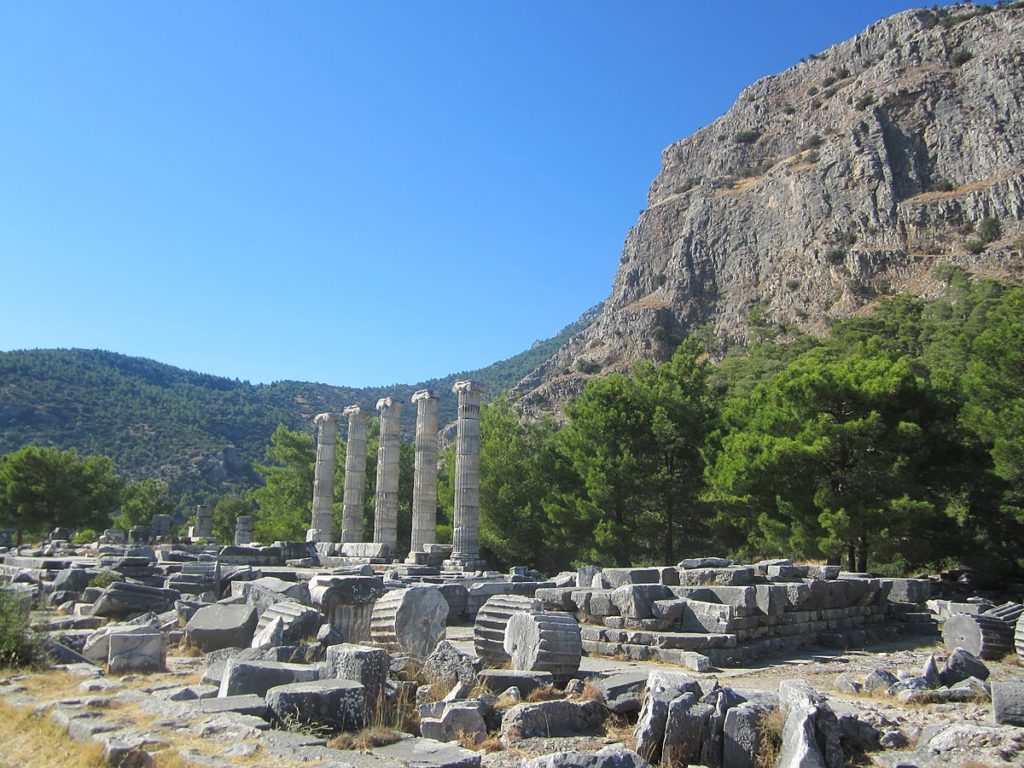
14. Priene
Priene is a city famous for its zoning plans and giving birth to modern city planning principles that we use today in modern cities.
Priene was also a member of the Panionic League .
Melia and Panionion are located on the other side of the mountain, very close to the Priene, but the mountain prevents easy transportation options.
Priene is a very well-preserved ancient city to explore in summer, and it is not as crowded with tourists as Ephesus.
You should bring your hiking shoes or comfortable shoes when visiting Priene. The city is built on hills, and there are many ups and downs. Yet, if you reach the Acropolis area, a magnificent sea view is waiting for you.
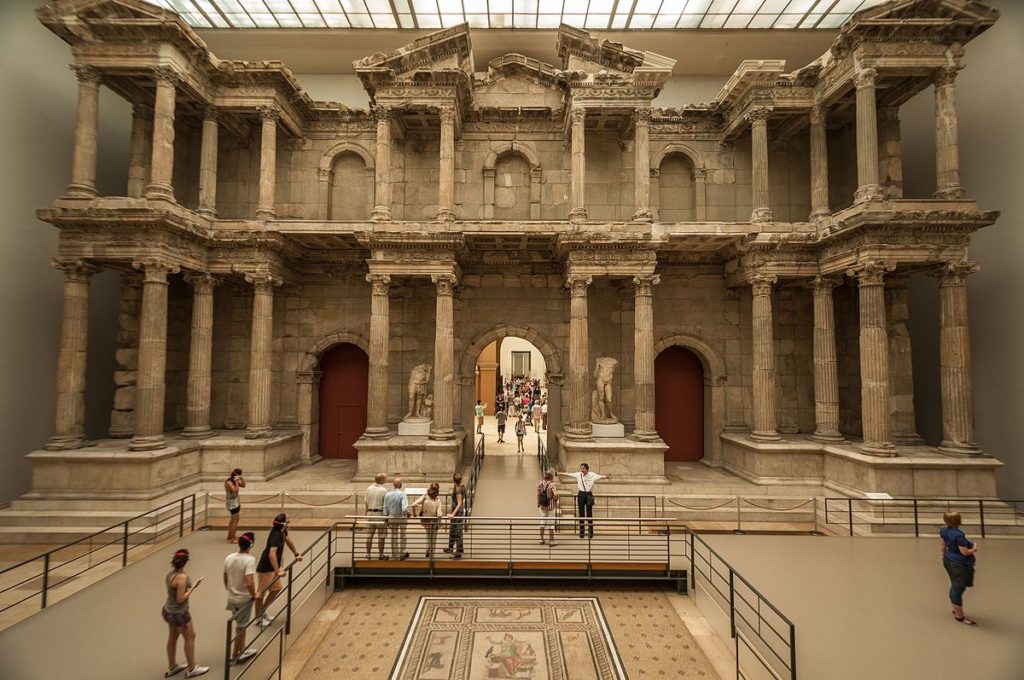
15. Miletus – Father of many cities
Another member of the Panionic League shared the same fate with Ephesus and Priene. Miletus harbor is also closed by the Meander River.
Miletus is known for the number of colonies established by this city. Miletus established more than 90 ninety colonies around the Black Sea and Aegean.
These colonies make Miletus, the father of many modern-day cities.
The size of Miletus is comparable to Ephesus, and if you like Ephesus, you should definitely check Miletus.
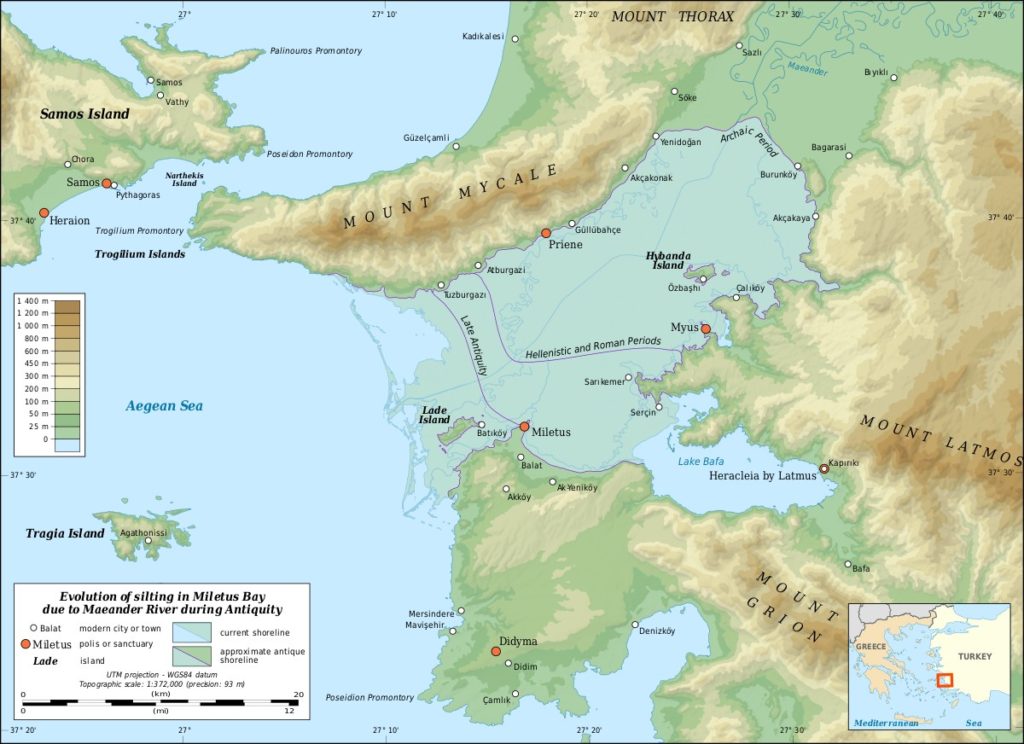
Photo source Wikipedia
Modern Times
1980s Kusadasi started to be accepted as one of the best holiday destinations in Turkey. There were Casinos (legal at the time), five-star hotels, and many luxurious offerings.
Kusadasi had untouched beauty and nature. I remember the time when we first went to Kusadasi to see our recently bought family summer house. It was around the early 1990s, and we were lost in the bushes.
Since then, Kusadasi has become a developed city. I believe in recent decades, Kusadasi finally controlled its growth and today, you can enjoy nature and the orderly lifestyle of a western-style city.
If you are looking for a holiday city like Ibiza with the sun, nice beaches, aqua parks, and historical sites, Kusadasi will definitely please you.
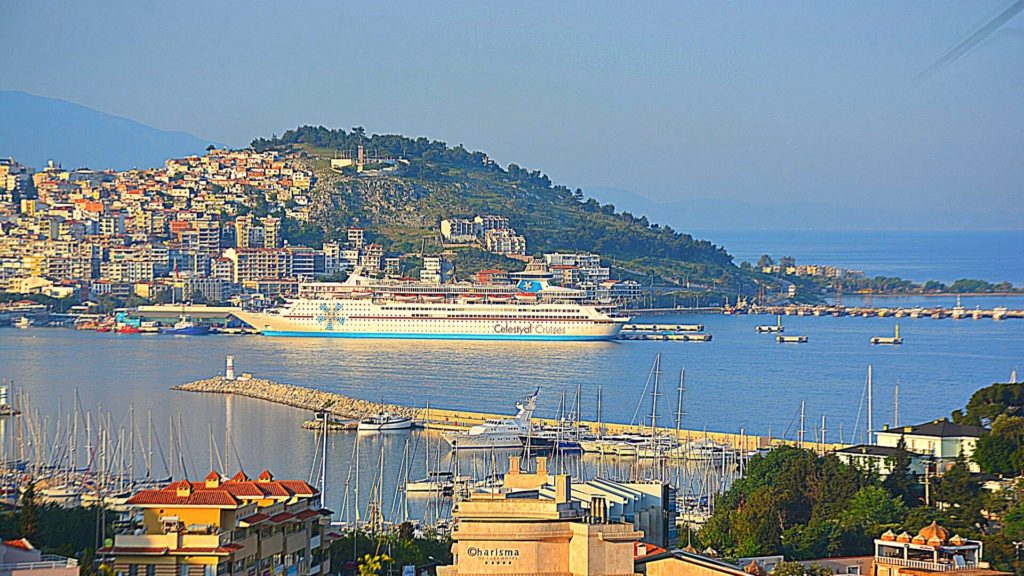
You can also check my complete guide on Kusadasi, on this page you will also discover all articles about Kusadasi.
Population of Kusadasi
According to the census of 1893. Kusadasi’s population was 15.047. The population was nearly evenly divided by Muslims and Christians. There were 8.822 Muslims and 6.121 Christians at the time.
Kusadasi Population by Years
According to official numbers, today Kusadasi has a population of 121.493. Yet, Population increases over a million during the summer months. This is how Kusadasi grew from a fishing town into a city. Source
| Year | Total | Urban | Rural |
| 1965 | 13.724 | 7.388 | 6.336 |
| 1970 | 15.625 | 9.032 | 6.593 |
| 1975 | 16.019 | 10.269 | 5.750 |
| 1980 | 21.346 | 14.734 | 6.612 |
| 1985 | 29.098 | 21.227 | 7.871 |
| 1990 | 43.636 | 31.911 | 11.725 |
| 2000 | 65.765 | 47.661 | 18.104 |
| 2007 | 73.543 | 54.663 | 18.880 |
| 2008 | 78.793 | 58.650 | 20.143 |
| 2009 | 81.295 | 61.648 | 19.647 |
| 2010 | 84.056 | 64.359 | 19.697 |
| 2011 | 88.464 | 68.225 | 20.239 |
| 2012 | 90.652 | 70.143 | 20.509 |
| 2013 | 94.995 | 94.995 | No data |
| 2014 | 101.619 | 101.619 | No data |
| 2015 | 103.849 | 103.849 | No data |
| 2016 | 106.939 | 106.939 | No data |

